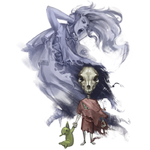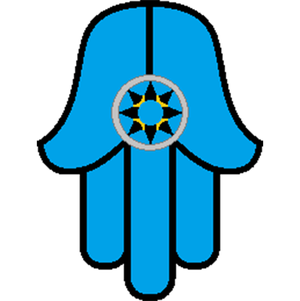Organizations of the Faithful
Reading an Organization Entry
| Global | The organization has offices in multiple nations or areas. "Global" here is a relative term, and does not imply centralized control. | |
| Localized | The organization is localized. See entry for details. Many Alexandrian-based groups have this feature! | |
| NPC | Only for NPCs. |
Temple Affiliations
Most major Temples are a faction unto themselves, and contain many diverse elements. For example, the Daeusite Temples house the Sunguard tradition, as well as others. Not every tradition, such as Sunguards or Silver Chords are necessarily their own organization, though at times they may function as a group. Instead, they are part of a larger umbrella. Temples require a variety of aid and services, and the agendas of deities are as broad as they are diverse in order to provide options for roleplay. These traditions also benefit immensely by being part of the greater structure.
Additional Organizations of the Faithful
| Common: Serrielite, Gilean, Vardaman, Inquisitor, Paladin, Cleric, Ranger Locations: Alexandria (A15) | |
| An order focused on the eradication of the undead. | |
| These men and women have dedicated their lives to hunting down and destroying the undead. Destruction ranges beyond the battlefield, to the uncovering of necromancers and works to counter Thulite propaganda and cults. The recruiting of new members is semi-formal, and the circumstances may differ on a case-by-case basis. Sufficiently grave threats are usually responded to by a mobilizing of the local members, followed by an organized effort to stop the threat. | |
| RPP-Related Skills: K/religion, K/arcana, Heal, other...? |
| Common: Elunite, Gilean, Danan, Inquisitor, Paladin, Ranger, Bard, Cleric, Druid Locations: Alexandria (A10), Greater Alexandria (H02), Wilderness Pointe | |
| An order focused on the eradication of Caracoroth's influence among lycanthropes. | |
| An order dedicated to the unmasking, hunting, and even conversion of lycanthropes. The Crescent stands opposite the Children of Garm and the latter's cults. Their work is not easy: shapechangers hide easily among everyday society and must often be rooted out before they may be neutralized. Though Elunans form strong numbers among the Crescent, Gilead's and Danan faiths are well-represented.
Some of their most active members are former or current lycanthropic creatures, themselves. In cases like these, the Crescent can provide them a new identity, and means to move forward outside of Garm's clutches. PCs may use the Skinwalker Prestige Class to emulate this heritage. | |
| RPP-Related Skills: Perception, Survival, K/nature, K/local...other? |
| Common: Altheans, paladins, monks, inquisitors, rangers, clerics Locations: Alexandria (A10) | |
| An order dedicated to the spread of nonmagic healing means to uplift poor communities. | |
| The Merciful Althean Order of the Hands of Ithildin, or simply The Hands of Ithildin, is a female-only monastic cult of the Temple of Althea. Their primary duty is to venerate Althea through community service, most particularly through the provision of mundane and thereby affordable healing, care and midwifery skills. In particular, through the teaching of these skills to others in poor areas, as a means to uplift that community and its members.
History There are several theories as to the origin of the Order. Some have aspects of the divine, believing that the first Arma Superius Cassiel Memmius, in life a poor but kindly woman who had died during childbirth, returned to earth from the Elysian city of Ithildin to spread the message of community, healing and the uplifting of the poor. Others have a more mundane explanation, believing it more likely that Cassiel Memmius was the wife of a noble man who became the first patron of the Hands of Ithildin. Ultimately, it is likely that there is some truth to either foundation story.
The Hands of Ithildin are distinct from the general healers of the Temple of Althea in their approach, teaching the importance of mundane healing over miraculous means. Whilst divine favour is not eschewed entirely, often magical means are not available or affordable in impoverished or remote communities; as such, the Hands of Ithildin use mundane medicine, emphasising careful long-term care and herbalism over spells and potions. This message is also expressed through education. In poor communities, the Hands will often invest much time and effort in training local women in healing, herbalism and midwifery, proving these women with important skills as well as a profession. These folk healers become known as gentis medica (pl. gentium medicae) and are often widely revered within their communities.
Doctrine closely matches that of the main body of Althean teaching, but with some differences, which can be summarised through the three main tenets of the faith of the Hands of Ithildin, which are repeated several times daily during individual and group prayer.
The Hands of Ithildin are based upon reasonably loose edicts that cover many aspects of a nun's life, a flexibility reflecting the variability of day-to-day activities of healers, midwives and community teachers. There are some edicts, however, which are based upon the monastic vows of other traditions, which are required to be followed. Some of these are mandatory, and some are optional; all have been developed as part of a lengthy tradition and are carefully controlled. The vows are as follows:
If a Hand of Ithildin breaks one of the mandatory vows (Caelibati, Munditiae, Pacis and Veritatis), they risk serious chastisement from her superiors and colleagues, and may be cast out of the order entirely. With the exception of a nun following the vow of Silentii during her sabbatical, the breaking of the elective vows is not viewed with such seriousness. When the Hands of Ithildin train new lay members in the mundane healing arts (the gentium medicae), they also instruct them in some of the Ithildinis doctrine, but certainly not all. Additionally, a gentis medica is not required to follow any vows.
When a woman joins the Hands of Ithildin, she becomes a manus minor (pl. manūs minōrēs), a 'minor hand', who undertakes training beneath more experienced nuns. Usually a manus minor is brought to the Order at her coming of age; training typically takes approximately 7 years. The penultimate year is spent in the community, providing care alongside other healers, and the final year is a hermetic sabbatical. Manūs minōrēs wear simple blue robes, without adornment or holy symbols, to distinguish them from other members of the Order After the final year of a training, a nun is brought fully into the Order in a ceremony when her robes are exchanged for ones with silver piping at the hems, and with a deep blue image of the Evening Star Telmentar at the collar. At this point the nun is known as a manus (pl. manūs), or 'hand', and is able to work fully and independently in the community. A manus is instructed not only to provide healing, but also to teach others in the mundane arts of healing, particularly the poor and needy, as per the edicts of the Order. Most cities or nations have a branch of the Hands of Ithildin, which are known as a corpus (pl. corpora), or 'body'. Each corpus may have a few dozen manūs and several manūs minōrēs, all under the direction of a single senior nun known as an arma īnferius (pl. arma īnferiōra), or 'lower arm'. Although in a position of power, the cult is somewhat egalitarian, and each manus has an almost equal say in the day-to-day activities of the corpus. An arma īnferius is usually chosen from nuns with a great deal of experience within the community, but the role can be turned down or relinquished at any time. A council of arma īnferiōra, the corpus mājus, meets occasionally to discuss the general activities of the cult, and to elect an overall leader, somewhat of a spokesperson with the main Temple of Althea. This leader is again only slightly superior to the wishes of the general corpus mājus. The order slowly seeks to expand itself. A recent foray was made into Am'shere. Though not rejected, the order was not officially permitted, either. Instead, it is locked in discussions with local elders and ultimately, the Empress. Of particular discussion are the vows, which must, they believe, be adapted to the requirements of that people, and their natures. Likewise, how the order changes to fit the tribal and caste system is in thoughtful discussion. Last but not least, any order must be under the guidance of the Empress, and appropriate castes. Yet, they have not said "no." Daily Activities The day-to-day activities of a Hand of Ithildin are much less rigid than in other monastic orders, reflecting the flexibility required in the work of a healer, nurse or midwife. However, the general pattern of life for a manus is expected to be similar to the following. A manus will rise early in the morning in an individual or shared room in the corpus house, typically several hours before a winter's dawn. Early morning activities include ablutions and private prayer, before a simple communal meal is taken at dawn. Following this, there is a period communal prayer and discussion of the day's activity with other manus. Lecturing of manus minores and gentium medicae usually takes place in the morning, usually finishing slightly before lunchtime, which may or may not be taken communally. Many manus treat this as freetime, to follow personal interests. The afternoon is much more flexible; most manus will undertake community work or training until the early evening, when they will gather for communal prayer and further discussions. Following a large evening meal, the nuns are free to again follow personal interests, although typically remaining within the corpus house. Evensong occurs much later in the evening, with all nuns singing in unison in praise of Althea. Before bed there are evening ablutions and finally, personal prayer. | |
| RPP-Related Skills: Heal, Diplomacy, Profession/Herbalist, Profession/Teacher, Knowledge/Local, Perform/Sing, Knowledge/Religion |
| Paladins Locations: Many temple orders | |
| Most paladins hold a position within their deity's temple, and may find themselves guided by the traditions held within these temples. Sample paladin traditions may be found below. It is also common for paladins to work together across order lines--they are foremost warriors of good and what is good in the world. See individual entry deity pages for titles. | |
| Althean Paladin Traditions: Paladins of Althea are often protectors of the weak. They serve often as guards to Althea's good works and as defenders of those who cannot aid themselves. It would be a mistake to call them pacifists. Rather, they are encouraged to be strategic, with both shield and strength.
| |
| RPP-Related Skills: Whatever is flavorful for their temple and tradition. |
| Monks Locations: Many temple orders | |
| Monks may belong to a variety of orders. A number of deities sponsor monastic orders, though sponsors are not limited to the ones, below. In addition, not every monastery has a sponsor. It may, instead, focus around an ideal or other set of teachings. You are encouraged to use your creativity. | |
| Angoron Monk Traditions: Angoronian monks tend to follow a more martial tradition, focused to an extent on heroism and good deeds. They're known for their feats of not just strength, but dexterity and any demonstration of bodily prowess. They tend to believe such acts are better attained through proper discipline and technique, rather than the more chaotic enthusiasm of other Angoronian followers.
| |
| RPP-Related Skills: Whatever is flavorful for their temple and tradition. |


